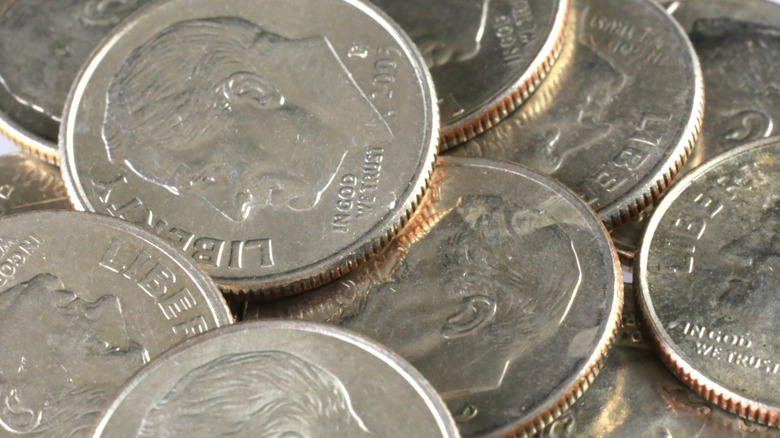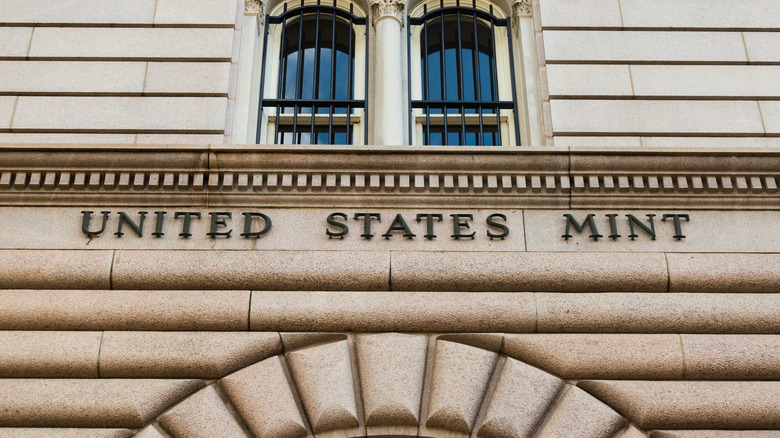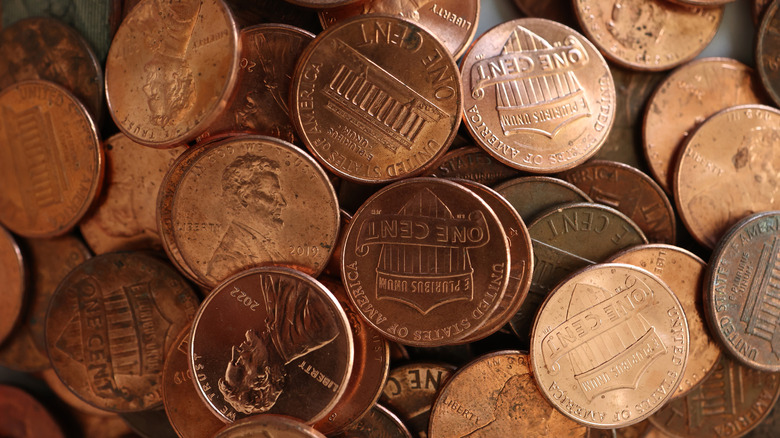How Much It Costs To Make A Dime Coin
Among the many strange and seemingly chaotic policy proposals of the second Trump term, perhaps none have surprised consumers quite as much as Trump's promise to eliminate the penny. If you're wondering why the penny, specifically, is under attack, President Trump explained in a February 2025 Trust Social post, "For far too long the United States has minted pennies which literally cost us more than 2 cents. This is so wasteful! I have instructed my Secretary of the US Treasury to stop producing new pennies. Let's rip the waste out of our great nations budget, even if it's a penny at a time."
While it's true that the penny costs more to make than it's actually worth, there are some significant downsides to eliminating the coin altogether that make many experts wary of Trump's plan. The 2024 U.S. Mint annual report puts the cost of making a penny at 3.69 cents, which might make you wonder just how much it costs to make all of the other circulating coins that comprise U.S. currency. Both pennies and nickels (which cost 13.78 cents to make) remain the only two coins that cost above their face value to make and, as of 2024, they have maintained their above-face-value status for a whopping 19 consecutive fiscal years. Meanwhile, the dime costs just 5.76 cents to make, while the quarter costs 14.68 cents, and the half-dollar coin costs 33.97 cents to make.
How dime coins factor in
While the cost of making a dime comes in at roughly six cents compared to the coin's 10 cent value, there are other factors to consider about the coin's circulation. For starters, the U.S. Mint reported that the circulation shipments for dimes actually decreased in 2024 (along with nickels), losing 11.1% points out of the total 2024 fiscal year shipments. This means that out of all of the coins that entered circulation in 2024, dimes comprised just 14.3%. To go back to the unlikely concept of eliminating pennies, penny circulation increased significantly in 2024, making up 54% of the total coin mix for the year.
It's also worth noting that circulating revenue –- the revenue that the U.S. Mint makes from producing and distributing coins –- experienced a 42.1% dip compared to 2023, largely driven by a 68.5% decrease in dime revenue –- amounting to $182.6 million. This drop can be due to multiple factors like a decrease in demand, an increase in the price of the actual metal used to make coins, and something known as seigniorage – the difference between the face value of a given coin and how much it cost to produce it, also known as production costs. As the demand for cash currency drops, and production costs increase, the U.S. Mint is sure to continue to experience declines in both its circulating shipments and its revenues.
The future of U.S. coins
Coins with positive seigniorage — dimes, for instance, which cost less to make than they're worth — are obviously a valuable tool for the federal government. Namely, the revenue collected from this seigniorage can be used for government programs – without the need to increase taxes. This is a big part of the reason Donald Trump has set his sights on eliminating pennies. However, while the elimination of pennies would save the U.S. government roughly $85 million a year, per the U.S. Mint's losses in 2024, it would also leave the country relying more heavily on nickels instead. While pennies currently cost 3.7 cents to make, each nickel costs 13.8 cents. This means that increasing nickel production – which would be necessary to offset the loss of pennies in the market — would effectively eliminate any savings that the U.S. Mint might have made from eliminating pennies in the first place.
Since the coin with the smallest denomination is typically the most minted, the elimination of the penny would only lead to equal financial strain with the rise of the nickel. That said, many still argue eliminating the penny could be the future. It's also worth mentioning that Canada successfully eliminated its penny back in 2012. There is also no guarantee that physical currency will retain its foothold with American consumers in the years to come — regardless of denomination. This is especially true considering the rise of digital wallets and virtual currency exchanges.


